
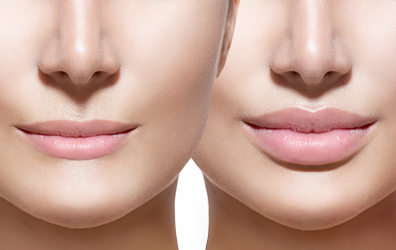
Lip Augmentation
Who doesn’t want fuller, juicier lips? According to relevant research (Gunn et al., 2009), women who look young for their age have large lips.
However, enhancing and shaping the lips is an artistic and technical challenge, that demands solid knowledge of lip and face anatomy, and meticulous mastery of injection techniques. The use of Dermal fillers and/or Autologous fat transfer can restore or enhance the volume and fullness of the lips.
The most widely used way to shape your lips and give them the pout, thickness and size that you wish is by placing dermal fillers directly into the lips. Most soft tissue fillers have a temporary effect, because they contain materials that are absorbed by the body over time. Some soft tissue fillers also contain lidocaine, which is intended to decrease pain or discomfort related to the injection.
A longer lasting option is fat grafting to your lips. By obtaining fat through liposuction, filtering and processing the fat, then carefully placing the fat into your lips, your lips can be shaped. Fat grafting typically lasts for years, making this the most durable option for lip enhancement.
Before the procedure
There is no need for special preparation. For women, it is recommended to come without any make-up or to remove it just before the injection.
It is very important to minimize the bleeding risk, by avoiding aspirin for 15 days before and after the session. We must also respect the following contra-indications:
- any skin inflammation or infection (i.e. herpes);
- bleeding disorder;
- severe allergies or with a history of anaphylaxis (acute allergic reaction);
- allergy to collagen or eggs (concerning soft tissue fillers that contain collagen or egg-derived products);
- allergy to animal products (concerning soft tissue fillers that contain animal materials);
- allergy to lidocaine (concerning soft tissue fillers that contain lidocaine);
- allergy to bacteria (concerning soft tissue fillers that contain hyaluronic acid material derived from bacteria fermentation).
From a general point of view, don’t hesitate to mention to your physician any health problem you may have, to allow him to counterbalance the indications and get optimal results.
The procedure
The treatment consists of a series of injections. Pain at the injection site may be ameliorated by use of anesthetic ointment to numb the skin – Eutectic Mixture of Local Anesthesia (EMLA) cream 5%, or injection of local anesthesia with Lidocaine
Injection usually takes only a few minutes. The process of injecting, massaging, and evaluating the result is performed, and additional filler added as needed. Although the area may feel a bit tender for a day or two, it is usually not painful enough to require any medication.
In case lip augmentation with autologous fat transfer is preformed, a “donor area” must be determined (such as the abdomen or buttocks) and liposuction is used to extract the fat. The suctioned fat can then be transferred to the face, as a graft. This is a minor surgical procedure that can be performed in the surgeon’s treatment room or in an operating room.
After the procedure: the follow-up
Usually, the after injection period is uneventful. The patients can go back to their normal life after the injections. Some undesirable but transitory effects may occur, such as a) redness and swelling at the injected points, rarely persisting more than 3 to 6 days; b) palpable lumps or hard areas at the injection sites.
In case of lip augmentation with autologous fat transfer additional discomfort in the donor area is involved. When your own fat is the injected filler, the healing process is longer and may take a few weeks
Most conditions can be alleviated with topical icing and massage and will improve within a matter of hours or just a few days. Some reactions may require more aggressive treatment with medications or injections. Be sure to discuss your recovery and treatment plan with your plastic surgeon.
Picture Gallery
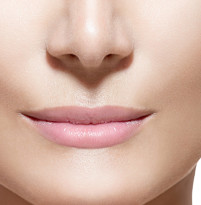
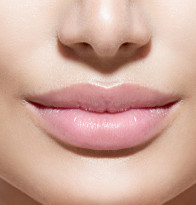
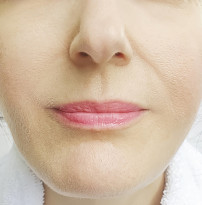
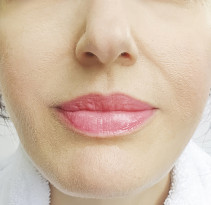
The result
The expected results of lip augmentation are apparent immediately and in most cases are impressive. Using crosslinked hyaluronic acid fillers will allow your lip results to last longer, typically 6-12 months.
When the patient’s own fat is the injected “filler”, most of the transferred fat usually survives, but typically, multiple fat transfer procedures will be needed to achieve permanent results. The grafted fat then has to redevelop a blood supply in order to survive. About 50% of the fat injected will survive, and the surviving fat will last forever.
Imperfect results
Although optimal results are expected from a single procedure, there is no guarantee. In some situations, it may not be possible to achieve the desired results with a single procedure. Also, most fillers do dissipate over time. To maintain your correction, you will need to consider repeating the injection process at intervals.
In case of undesirable results from Hyaluronic Acid (excess of Hyaluronic Acid injected, appearance of lumps or nodules), an enzyme, Hyaluronidase can be injected intralesionally and dissolve the excessive hyaluronic acid.
Possible complications
Complications from lip augmentation are uncommon. Any potential risks vary depending on the specific filler used and the relative permanence of the filler substance and may include:
- Asymmetry;
- Bleeding from the injection site, swelling;
- Infection at the injection site;
- Lumps;
- Palpability of the filler under the surface of the skin;
- Under- or over-correction.
These risks will be fully discussed prior to your consent. It is important that you address all your questions directly with your plastic surgeon.
My Way …. “Metron Ariston”
Throughout my career, I have been striving to find the golden mean in all cases, to avoid extremities…“Metron Ariston”
Full lips have diachronically been synonymous with beauty and youth. It is now easier than ever to get the ‘juicy’ lips you have always wanted! However, to obtain natural results, it demands ground knowledge of lip and face anatomy, and mastery of injection techniques.
There are several techniques and materials for lip augmentation and/or rejuvenation, depending on lip shape and the desired result. Hyaluronic acid-based dermal fillers is the most commonly used method to correct lip shape, structure and volume. I also highly suggest Autologous Fat Transfer which works to naturally enhance lips and create a fuller and plumper appearance, delivering long-lasting results.
This webpage aims to provide some information about the subject. Individual patient circumstances may differ, which might alter both the advice and course of therapy given to you by your doctor.
Source:
American Society of Plastic Surgeons, British Association of Plastic, Reconstructive and Aesthetic Surgeons, French Society of Plastic, Reconstructive and Aesthetic Surgery
